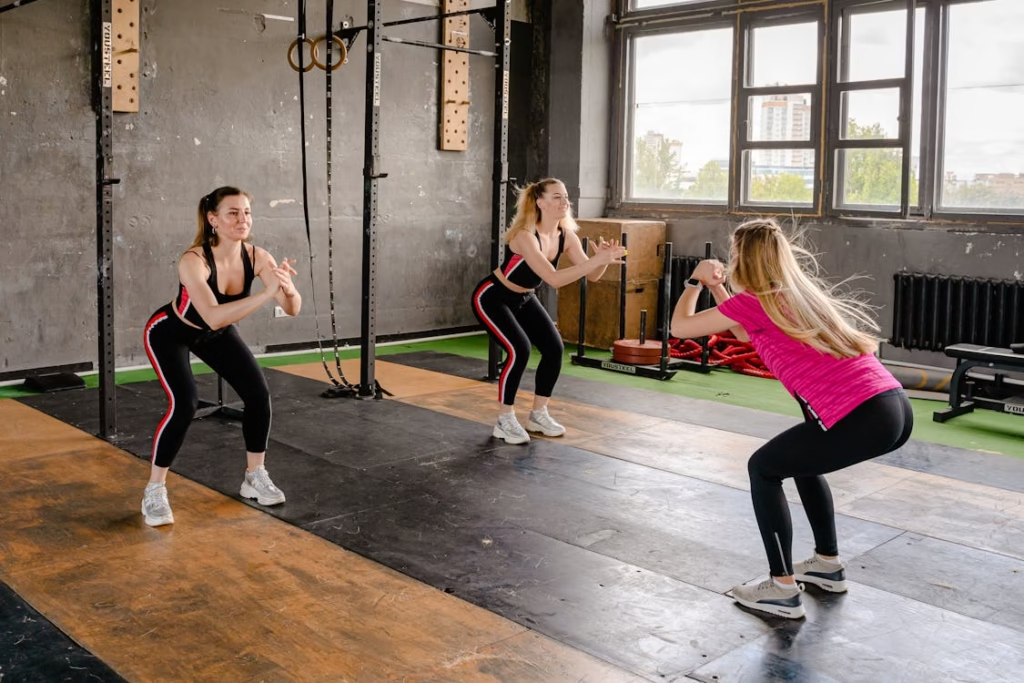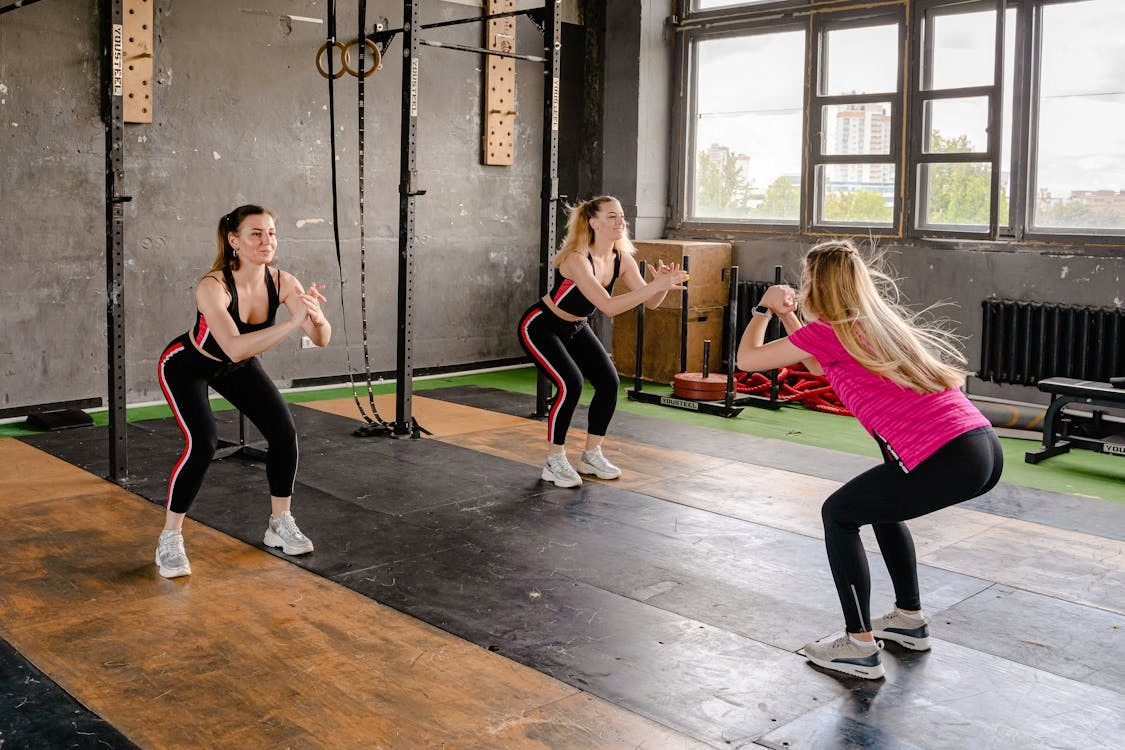Introduction
In today’s fast-paced world, maintaining physical fitness is paramount not just for aesthetic appeal but for enhancing our daily functional capabilities. Functional fitness focuses on exercises that train your muscles to work harmoniously, preparing them for everyday tasks by simulating common movements you might do at home, work, or in sports. This training approach emphasizes building a body capable of handling real-life activities in real-life positions, not just lifting a certain amount of weight in an idealized posture created by a gym machine.

Benefits of Functional Fitness
Engaging in functional fitness offers numerous advantages that transcend beyond the gym:
- Improved Daily Performance: By mimicking daily activities, functional exercises enhance the efficiency and ease of performing everyday tasks, reducing fatigue and increasing productivity.
- Injury Prevention: Strengthening muscles and joints used in daily movements decreases the risk of injuries both during exercise routines and daily activities.
- Enhanced Balance and Coordination: Functional training often involves multi-planar movements, which improve proprioception, balance, and coordination, essential for activities like walking on uneven surfaces or carrying objects.
- Increased Flexibility and Mobility: Incorporating a wide range of motions in exercises enhances overall flexibility and joint mobility, contributing to better posture and reduced muscle stiffness.
- Comprehensive Muscle Development: Functional exercises engage multiple muscle groups simultaneously, promoting balanced muscle development and functional strength.
Top 10 Functional Fitness Exercises for Daily Life Activities
To integrate functional fitness into your routine, consider the following exercises that target multiple muscle groups and simulate everyday movements:
- Squats
Squats are fundamental movements that strengthen the lower body, particularly the quadriceps, hamstrings, and glutes. They mimic actions like sitting and standing, enhancing mobility and leg strength.
How to Perform:- Stand with feet shoulder-width apart.
- Lower your body by bending the knees and hips, keeping the back straight and chest up.
- Descend until your thighs are parallel to the ground, then rise back to the starting position.
Benefits:
- Improves leg strength and endurance.
- Enhances core stability.
- Assists in performing daily tasks like lifting objects from the ground.
- Lunges
Lunges enhance balance, coordination, and unilateral leg strength, reflecting movements such as walking, climbing stairs, or stepping over obstacles.
How to Perform:- Stand upright, take a step forward with one leg.
- Lower your hips until both knees are bent at approximately 90-degree angles.
- Ensure the front knee is directly above the ankle, and the back knee hovers just above the ground.
- Push back to the starting position and repeat on the other leg.
Benefits:
- Balances muscle development between legs.
- Improves functional mobility and flexibility.
- Strengthens stabilizing muscles, reducing the risk of falls.
- Deadlifts
Deadlifts are pivotal for strengthening the posterior chain, including the back, glutes, and hamstrings, essential for proper posture and lifting mechanics.
How to Perform:- Stand with feet hip-width apart, barbell or dumbbells in front.
- Hinge at the hips, keeping the back straight, and grasp the weight.
- Lift by extending the hips and knees to stand upright, then lower the weight back down with control.
Benefits:
- Enhances lifting mechanics used in daily activities.
- Strengthens core and back muscles, supporting spinal health.
- Improves grip strength.
- Push-Ups
Push-ups are versatile exercises that strengthen the chest, shoulders, triceps, and core, simulating pushing movements encountered daily.
How to Perform:- Start in a plank position with hands slightly wider than shoulder-width.
- Lower your body until the chest nearly touches the floor, keeping the body in a straight line.
- Push back up to the starting position.
Benefits:
- Enhances upper body strength.
- Improves core stability.
- Can be modified to suit various fitness levels.
- Pull-Ups
Pull-ups develop upper body strength, particularly the back, shoulders, and arms, aiding in movements like pulling or lifting objects overhead.
How to Perform:- Grasp a pull-up bar with palms facing away, hands shoulder-width apart.
- Hang with arms fully extended.
- Pull your body upward until the chin surpasses the bar, then lower back down with control.
Benefits:
- Strengthens multiple upper body muscle groups.
- Improves grip strength.
- Enhances functional pulling movements.
- Planks
Planks are isometric exercises that build core strength and stability, crucial for maintaining posture and balance in daily activities.
How to Perform:- Assume a push-up position but rest on forearms instead of hands.
6. Planks
Planks are isometric exercises that build core strength and stability, crucial for maintaining posture and balance in daily activities.
How to Perform:
- Assume a push-up position but rest on forearms instead of hands.
- Keep the body in a straight line from head to heels.
- Engage the core and hold the position for as long as possible without compromising form.
Benefits:
- Strengthens core muscles, improving overall stability.
- Enhances posture and reduces lower back pain.
- Supports proper body alignment in daily movements.
7. Step-Ups
Step-ups mimic climbing stairs and strengthen the legs while improving balance and coordination.
How to Perform:
- Stand in front of a sturdy bench or step.
- Step up with one foot, pressing through the heel to lift your body onto the platform.
- Step down carefully and repeat on the other side.
Benefits:
- Builds unilateral leg strength.
- Enhances coordination and balance.
- Improves stair-climbing and walking efficiency.
8. Farmer’s Carry
This exercise mimics carrying groceries or heavy bags, improving grip strength and overall endurance.
How to Perform:
- Hold a heavy weight in each hand.
- Walk forward while maintaining good posture and core engagement.
- Continue for a set distance or time.
Benefits:
- Improves grip strength and forearm endurance.
- Strengthens the shoulders and core.
- Enhances carrying capacity in daily life.
9. Kettlebell Swings
Kettlebell swings develop power and endurance, making them great for functional movements like lifting and reaching.
How to Perform:
- Stand with feet shoulder-width apart, holding a kettlebell with both hands.
- Hinge at the hips and swing the kettlebell forward to chest height using explosive hip movement.
- Control the descent and repeat.
Benefits:
- Enhances explosive power and cardiovascular endurance.
- Strengthens the posterior chain, including glutes and hamstrings.
- Improves movement efficiency in daily tasks.
10. Medicine Ball Slams
Medicine ball slams enhance full-body strength and coordination, simulating throwing and lifting movements.
How to Perform:
- Hold a medicine ball with both hands.
- Lift it overhead, then slam it to the ground with force.
- Pick it up and repeat.
Benefits:
- Builds upper body strength and endurance.
- Improves coordination and core stability.
- Enhances explosive movement patterns for daily tasks.
Conclusion
Functional fitness exercises are designed to improve everyday movements, making daily tasks easier and reducing the risk of injury. By incorporating these exercises into your routine, you can enhance strength, mobility, and overall quality of life. Whether you are lifting groceries, climbing stairs, or playing with your kids, functional fitness ensures your body is prepared for life’s challenges. Start incorporating these workouts today to experience the benefits firsthand!
Click here to read more HEALTH news
![]()




Functional fitness seems like a practical approach to staying healthy, especially in our busy lives. I appreciate how it focuses on real-life movements rather than just gym aesthetics. The exercises mentioned, like planks and step-ups, sound simple yet effective for daily activities. I wonder, though, how often one should do these exercises to see noticeable improvements? Also, are there any specific tips for beginners to avoid injury while starting? I’m curious if functional fitness can be adapted for people with limited mobility or chronic conditions. What’s your take on combining functional fitness with other workout styles, like yoga or cardio? Would love to hear more about your experience or recommendations!